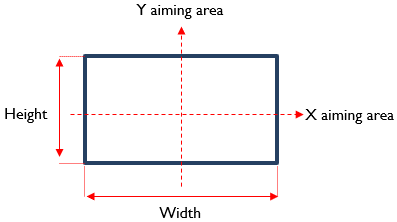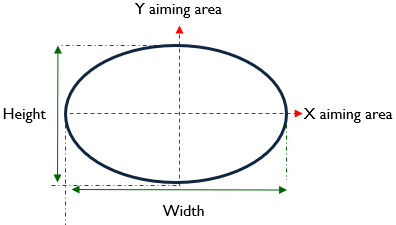LiDAR Sensor Aiming Area Parameters
This page provides more information on the Aiming Area parameter, used during the definition of a LiDAR Sensor.
LiDAR sensors are often placed behind protective glasses or sheets.
The Aiming Area section allows you to define the position, size and shape of this protective glass also called cover lens. When defined, the cover lens is taken into account for simulation allowing the LiDAR to recover target signatures through it.
- A primary ray is emitted by the LiDAR Source and propagated in the system.
- Then, for all impacts of this primary ray propagation, a secondary ray is propagated in the direction of the Aiming Area if the BSDF at the impact point has a diffuse contribution
As the cover lens is likely to be placed right by the sensor, the axis system of the aiming area should (in most cases) be the same as the sensor's.
Axis System
The Axis System of the aiming area can either be inherited from the sensor's axis system or defined manually. In the 3D view, a preview of the aiming area is also displayed to help position it to the desired location.
Dimensions
The dimensions of the aiming area are either inherited from the sensor's pupil diameter or have to be edited manually.
Definition
The aiming area is defined by its shape and size.
Two shape types are available, Rectangular or Elliptical.


Transparent Material Case
When there is a tangency with no gap between a transparent material and an opaque material, the secondary ray aimed at the aiming area starts in the transparent material. However, when exiting the transparent material, the refraction changes the rays direction, and misses the target. Only primary rays can make it to the sensor but the probability is very low. This can generate unexpected result
_Sensor_LiDAR_Aiming_Area_Transparent_Material.png)
- first when entering the transparent material
- then when existing again
When the two faces are parallel, the exit direction is the same as the direction before entering. Therefore, the exiting rays are still aimed at the area.


